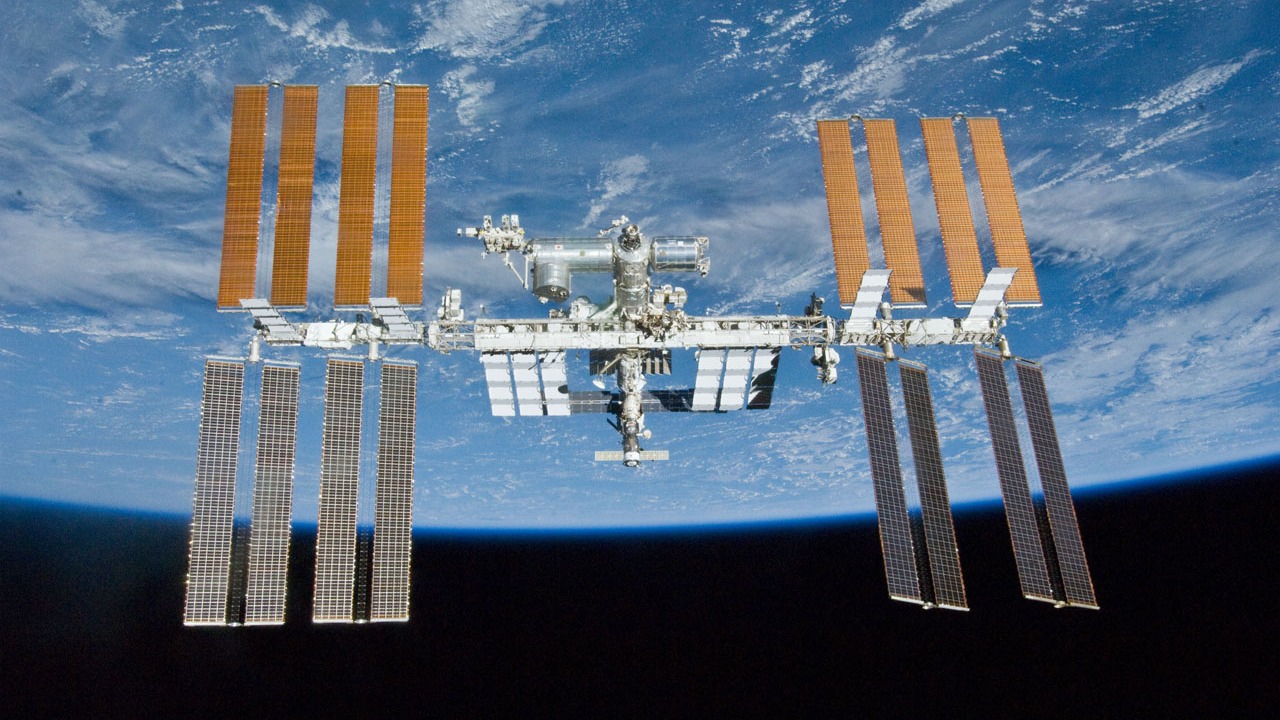ISS fires thrusters to avoid oncoming space junk
It's unclear how close the space junk was to the space station.

Space debris flying towards the International Space Station forced an evasive maneuver Thursday (Aug. 24).
A Russian module on the International Space Station (ISS) turned on around 11 a.m. EDT (1500 GMT or 6 p.m. in Moscow) to move the orbiting complex away from space junk. NASA confirmed the maneuver via e-mail.
"On Thursday, the International Space Station's Zvezda service module engines were fired for 21.5 seconds ... to maneuver the complex away from the predicted track of an orbital debris fragment," NASA officials wrote.
The space station moved its orbit down towards our planet by about 1,640 feet (500 meters), added a Russian-language report from Russian state media outlet TASS, translated by Google; the average altitude of the ISS above Earth is roughly 250 miles or 400 km.
NASA's email, and an earlier agency blog post, said the orbit adjustment will not have any impact on operations in what is a a busy 24 hours for the space station.
Related: How often does the International Space Station have to dodge space debris?
The Progress 85 cargo craft is expected to arrive at the ISS around 11:50 p.m. EDT Thursday (0350 GMT on Friday, Aug. 25).
Get the Space.com Newsletter
Breaking space news, the latest updates on rocket launches, skywatching events and more!
Hours after that arrival, the SpaceX Crew-7 quartet of astronauts will rocket up to the ISS as well. They are scheduled to launch from NASA's Kennedy Space Center at 3:50 a.m. EDT (0750 GMT) on Friday and you can watch coverage here at Space.com, via NASA Television. Their planned docking will happen Saturday (Aug. 26), which will also run live here at Space.com through NASA.
Course corrections by the ISS have happened more than 30 times since 1999 and the need is accelerating as more satellites and space junk accumulate in orbit. It is unclear how close the debris passed by the space station this time, or whether it was a natural or artificial piece of debris.
In general, however, such flybys happen from relatively afar.
NASA's guidelines monitor the ISS for any debris coming within a "pizza box"-area shape of space around the station's orbit, which is roughly 2.5 by 30 by 30 miles (4 by 50 by 50 kilometers) with the ISS at the center, according to agency officials. Tracking comes via the U.S. military, which can follow flying pieces as small as 2 inches (5 centimeters) in diameter.
This story was updated at 2 p.m. EDT with updated information from NASA.
Join our Space Forums to keep talking space on the latest missions, night sky and more! And if you have a news tip, correction or comment, let us know at: community@space.com.

Elizabeth Howell (she/her), Ph.D., was a staff writer in the spaceflight channel between 2022 and 2024 specializing in Canadian space news. She was contributing writer for Space.com for 10 years from 2012 to 2024. Elizabeth's reporting includes multiple exclusives with the White House, leading world coverage about a lost-and-found space tomato on the International Space Station, witnessing five human spaceflight launches on two continents, flying parabolic, working inside a spacesuit, and participating in a simulated Mars mission. Her latest book, "Why Am I Taller?" (ECW Press, 2022) is co-written with astronaut Dave Williams.
-
Classical Motion They're gona have to install redundant collision kits and equipment. And conduct collision drills. And fire/atmosphere control. Sooner or later they'll get hit. And it won't be a micro size one. Maybe during a CME or something un-exspected(another collision).....that puts them in harm's way.Reply
Can you imagine one of those shoe box formations going A.I rogue and coming at you?









